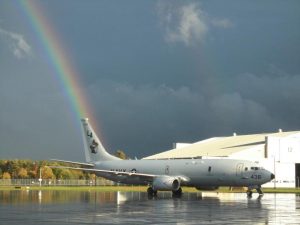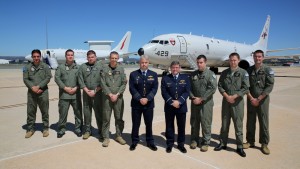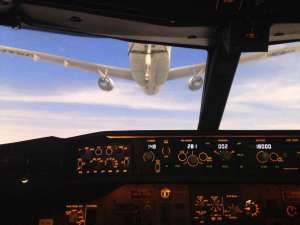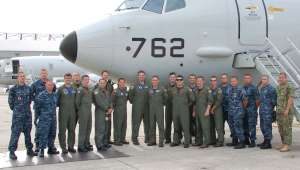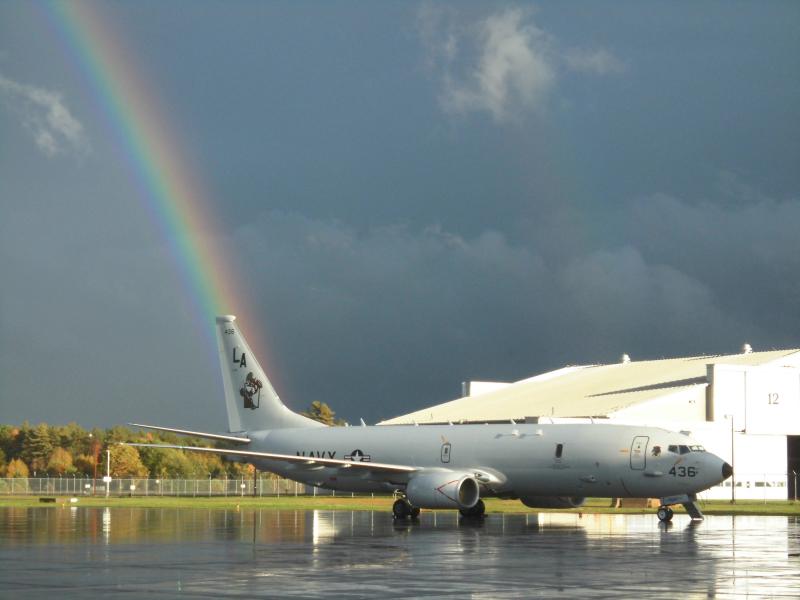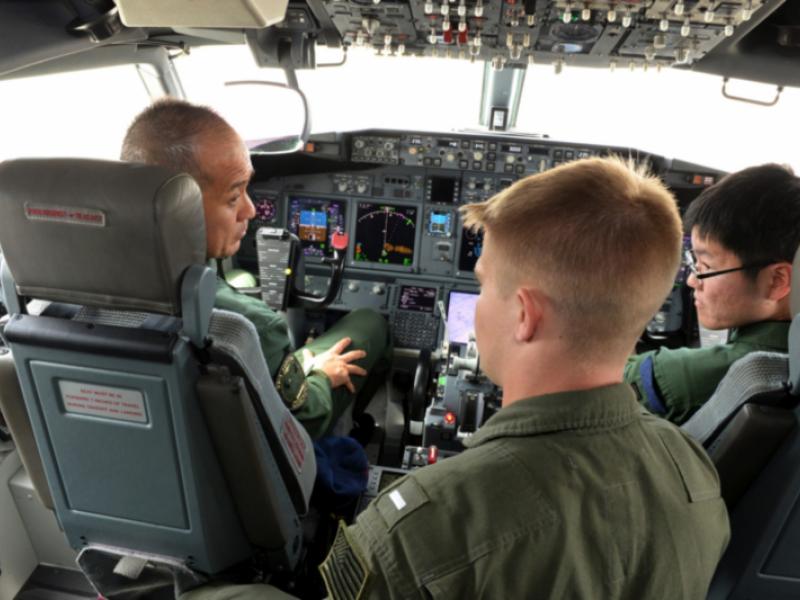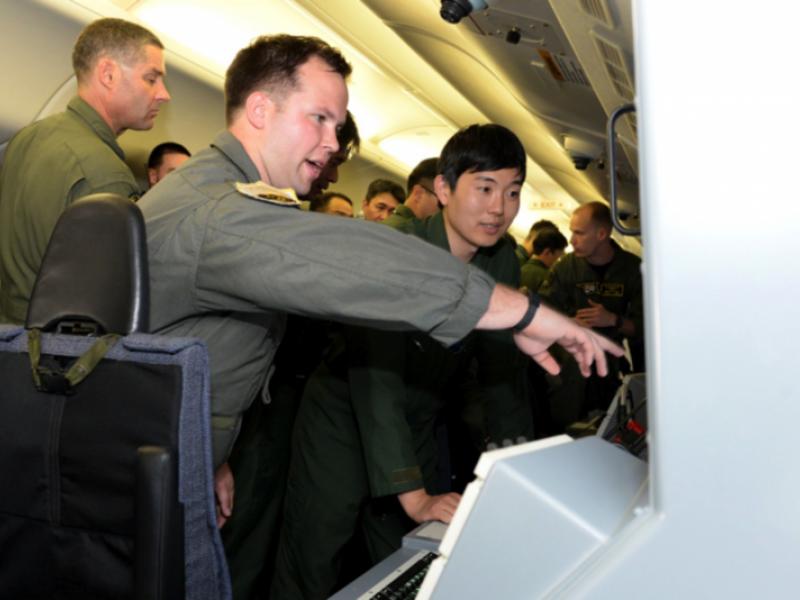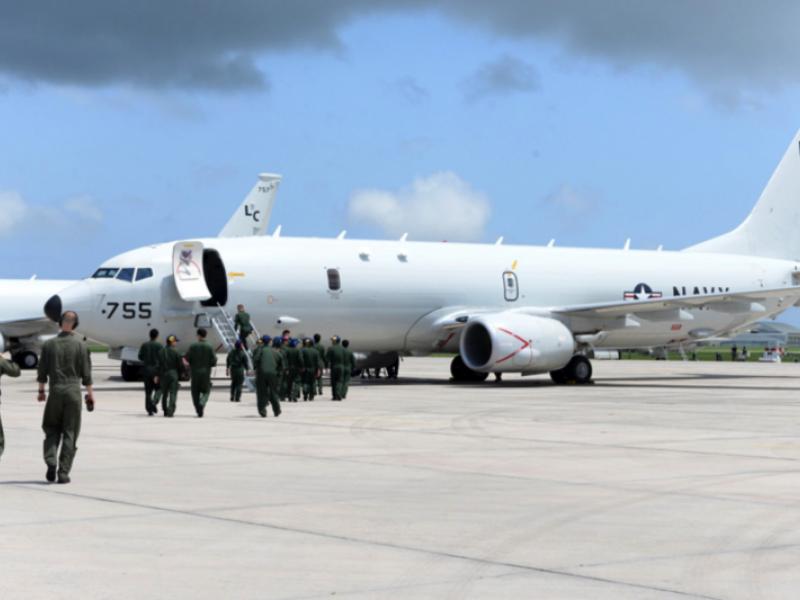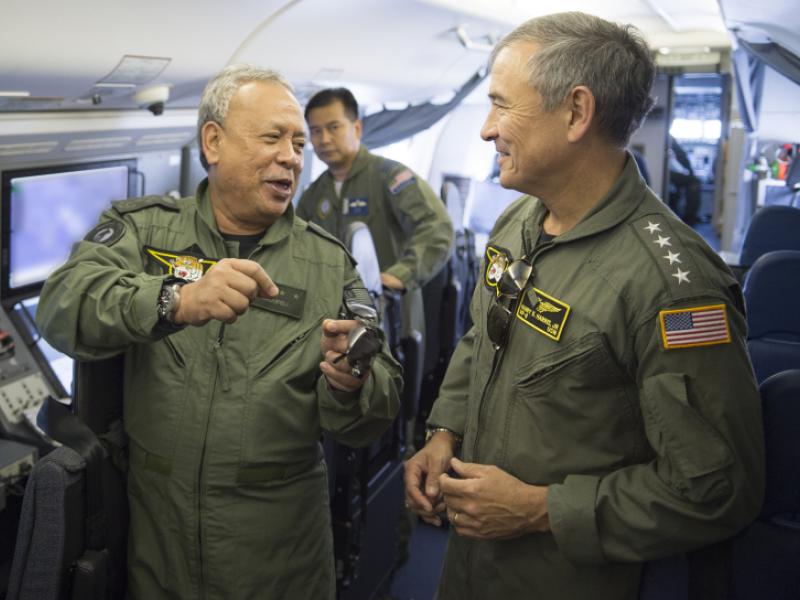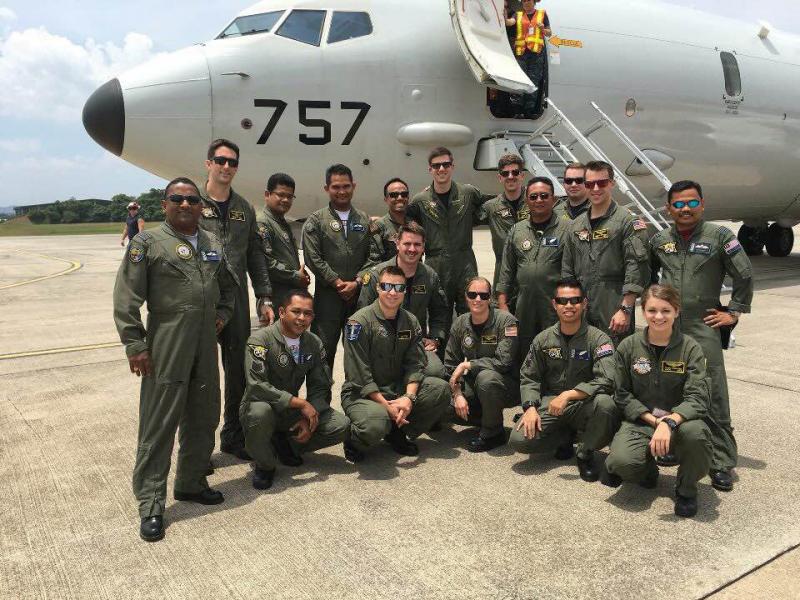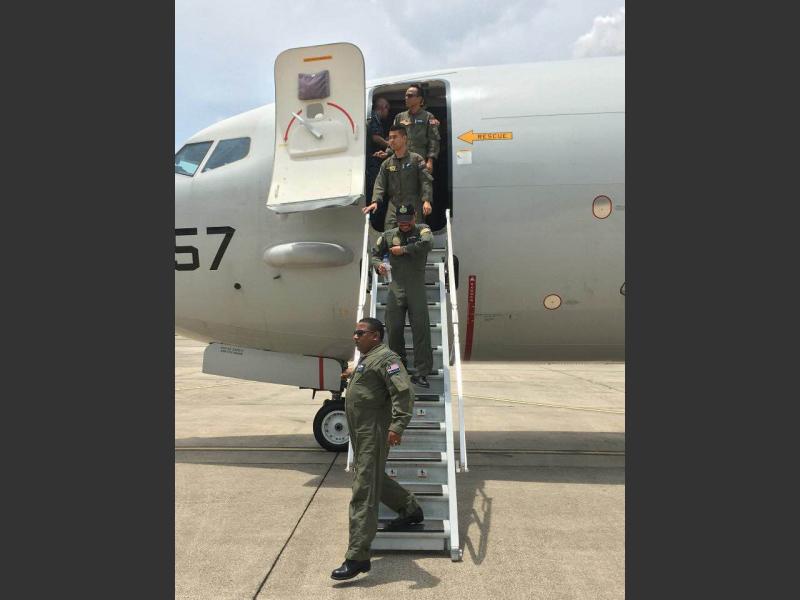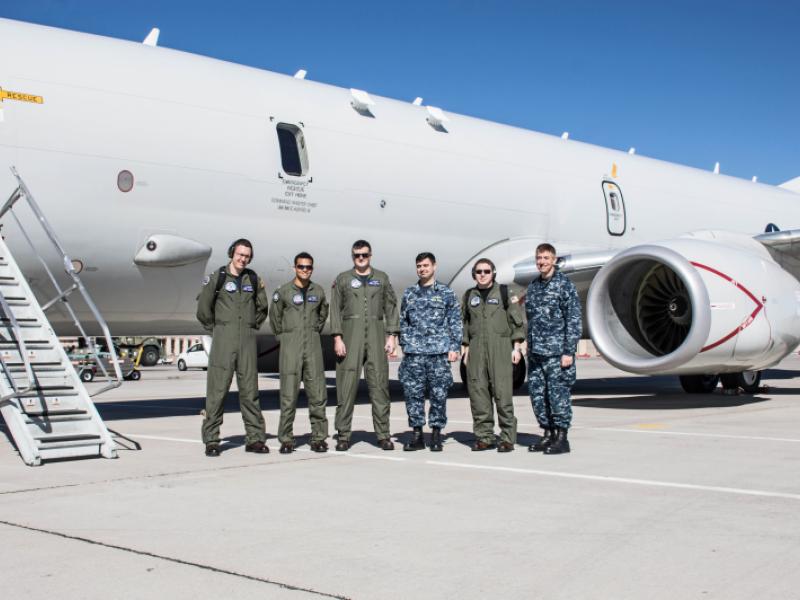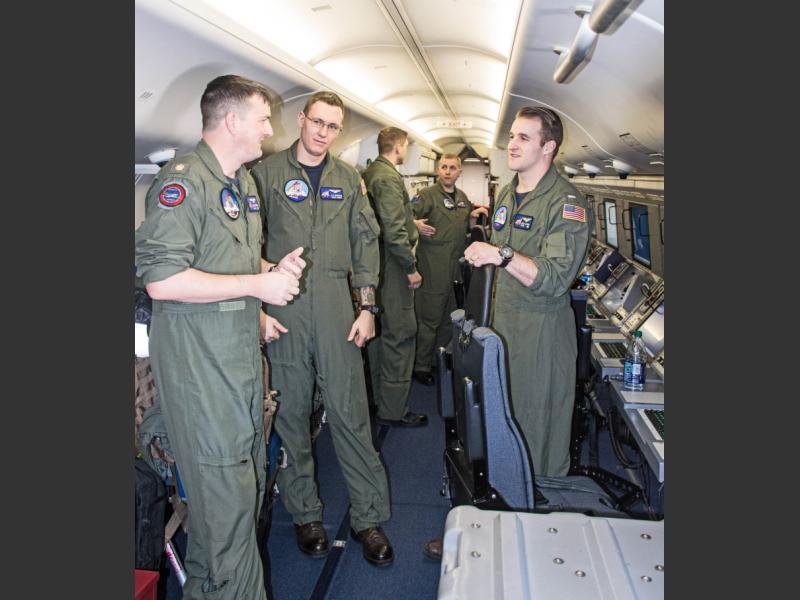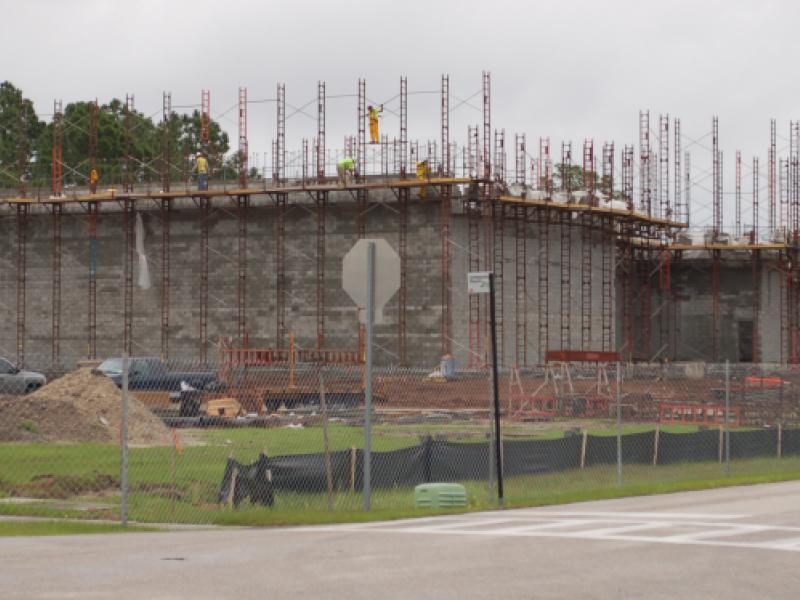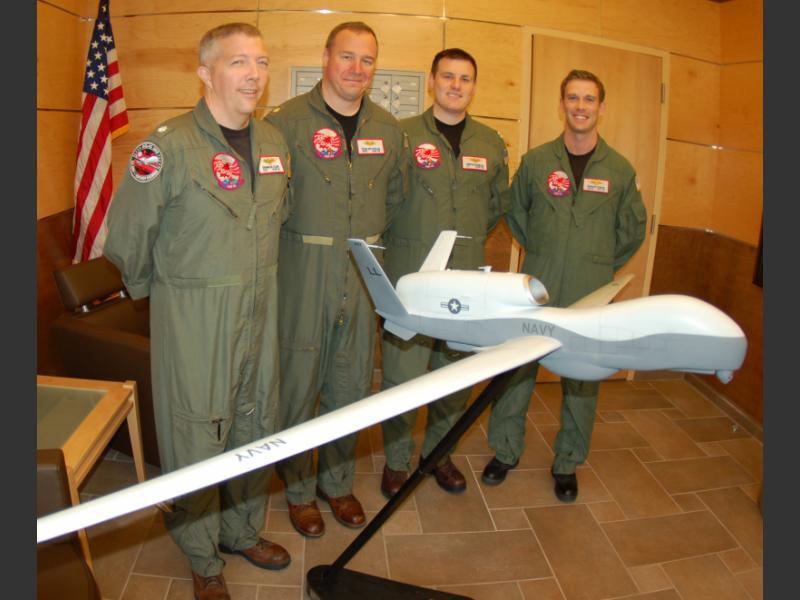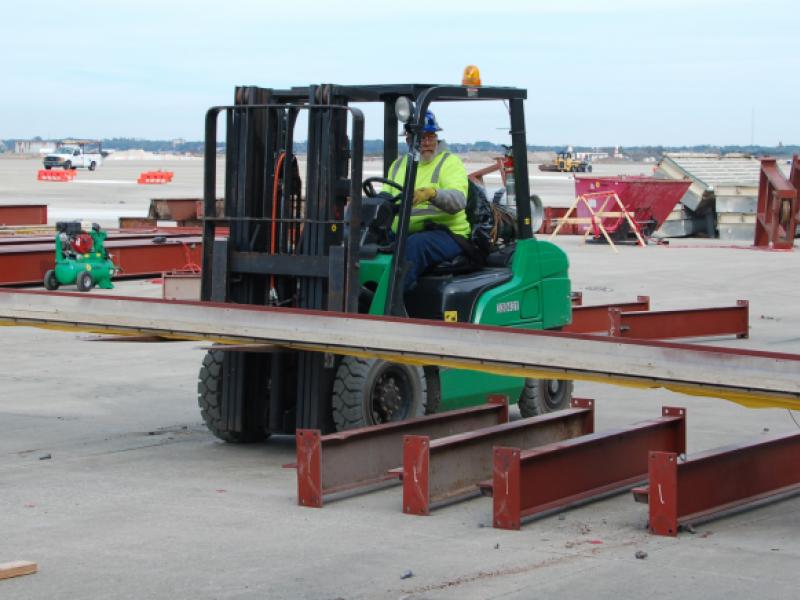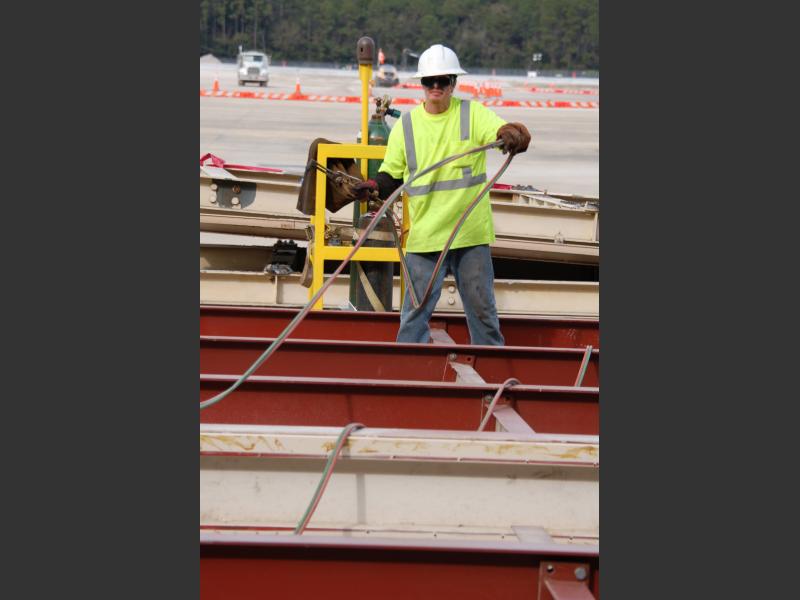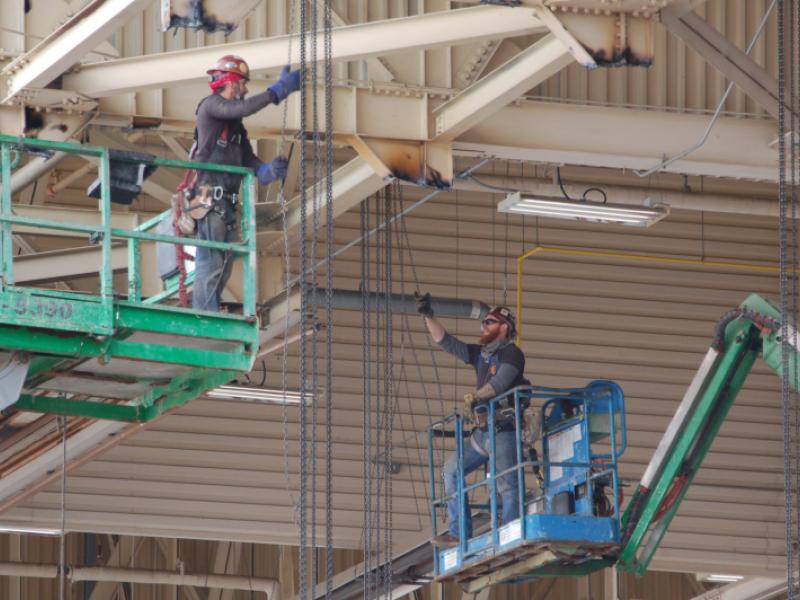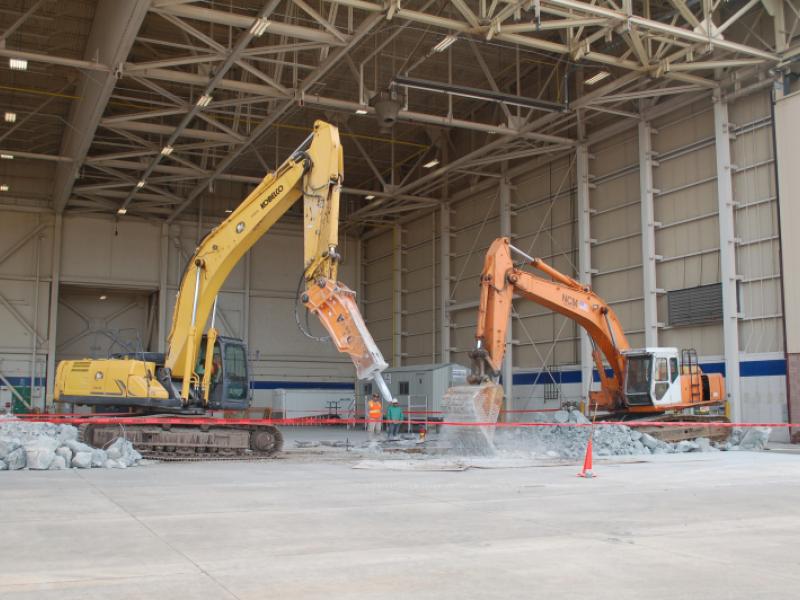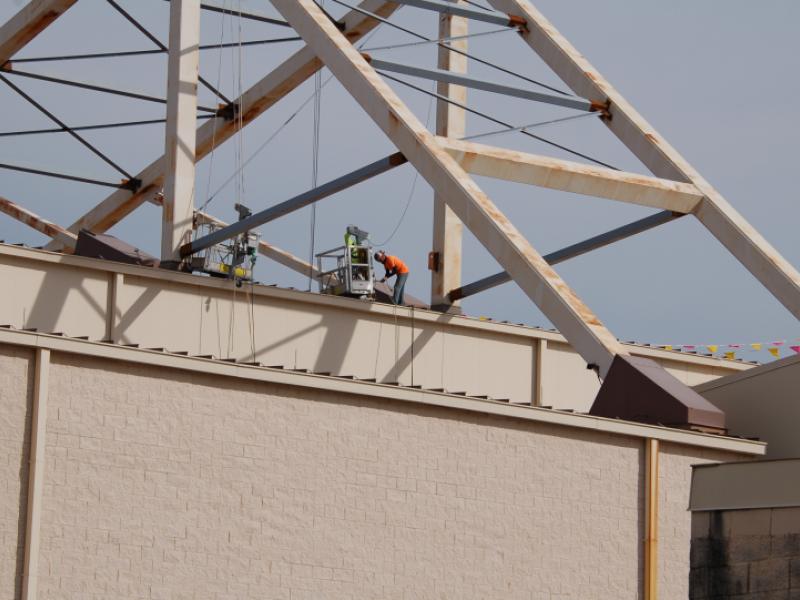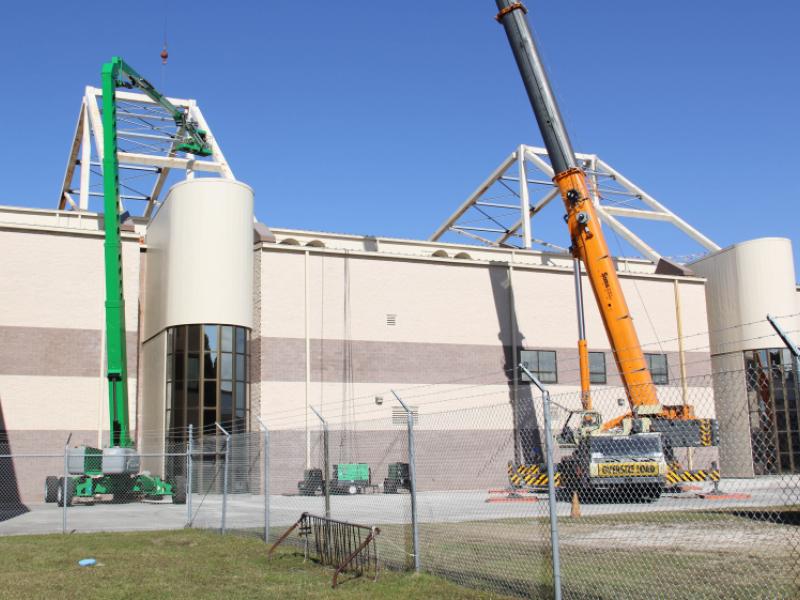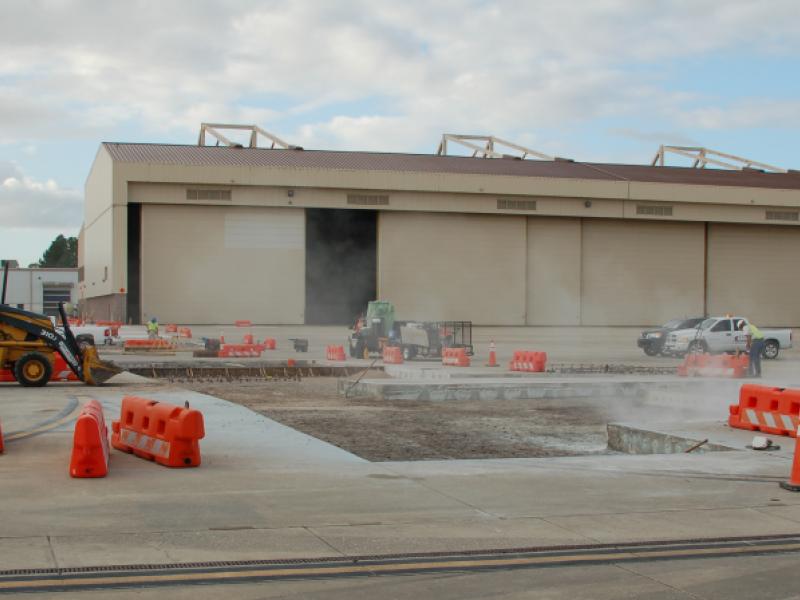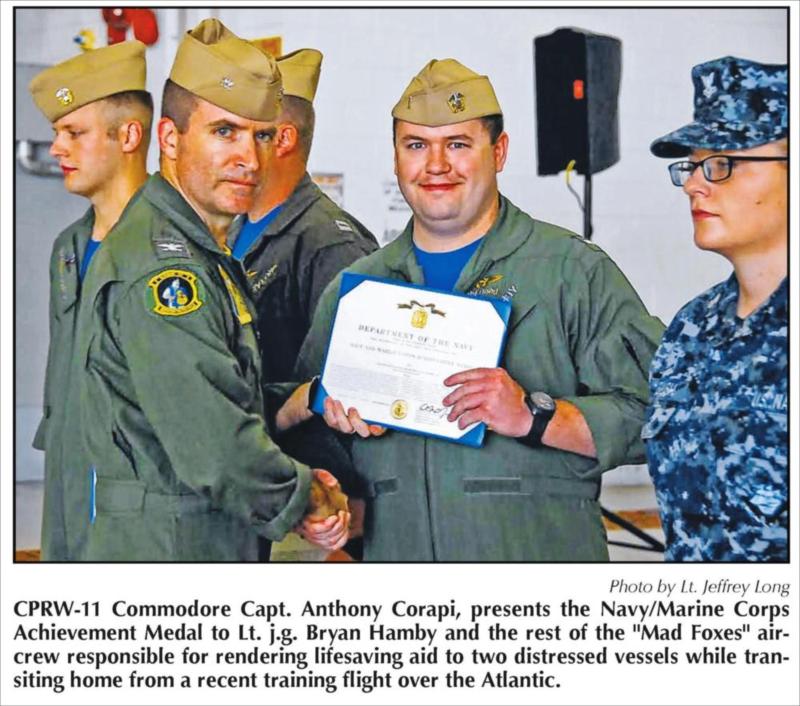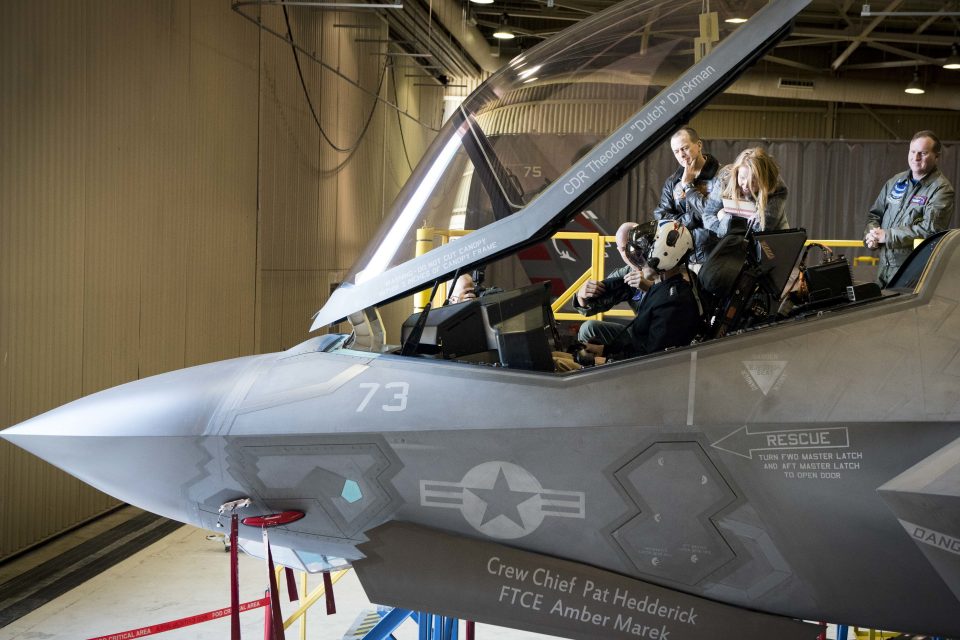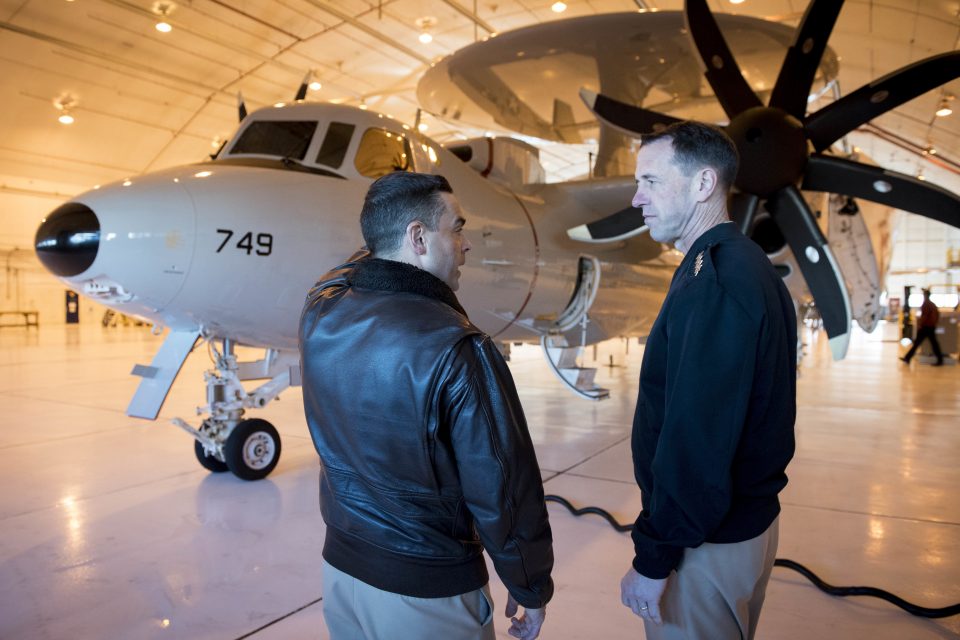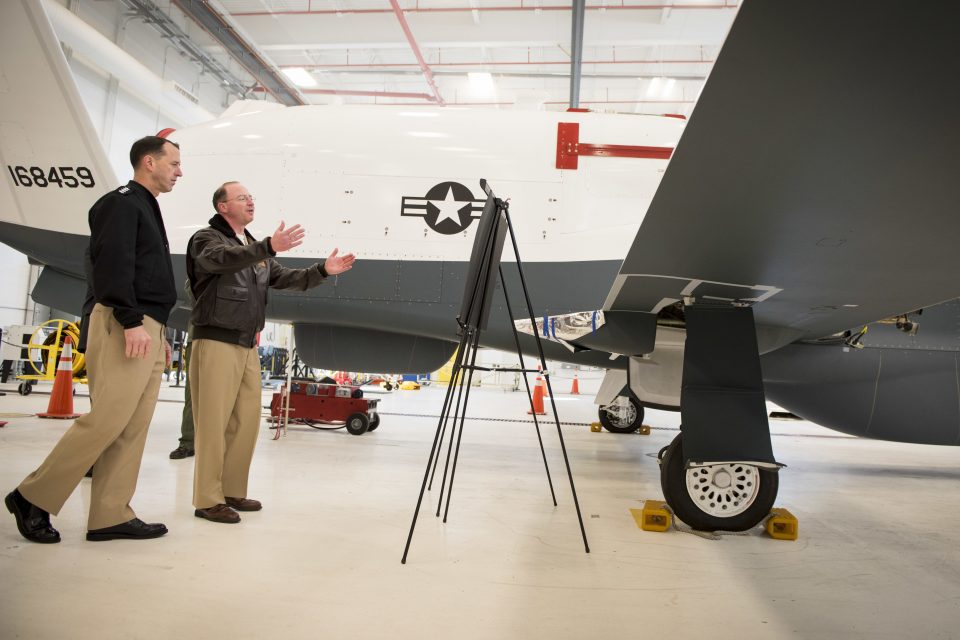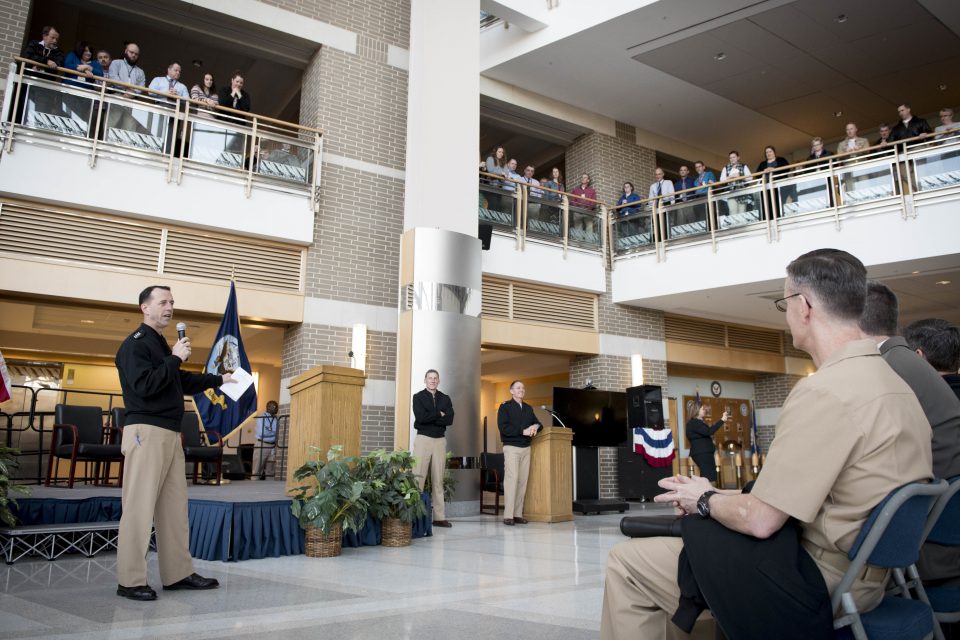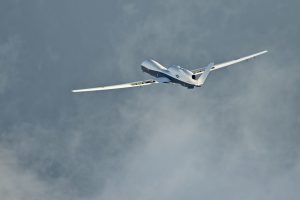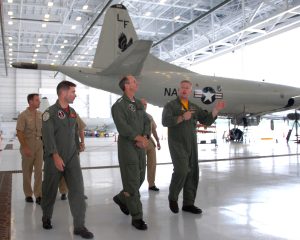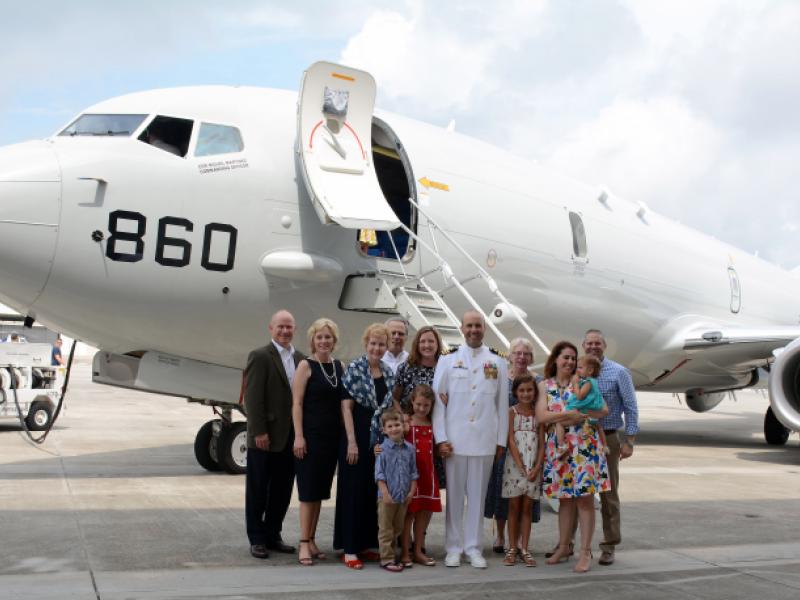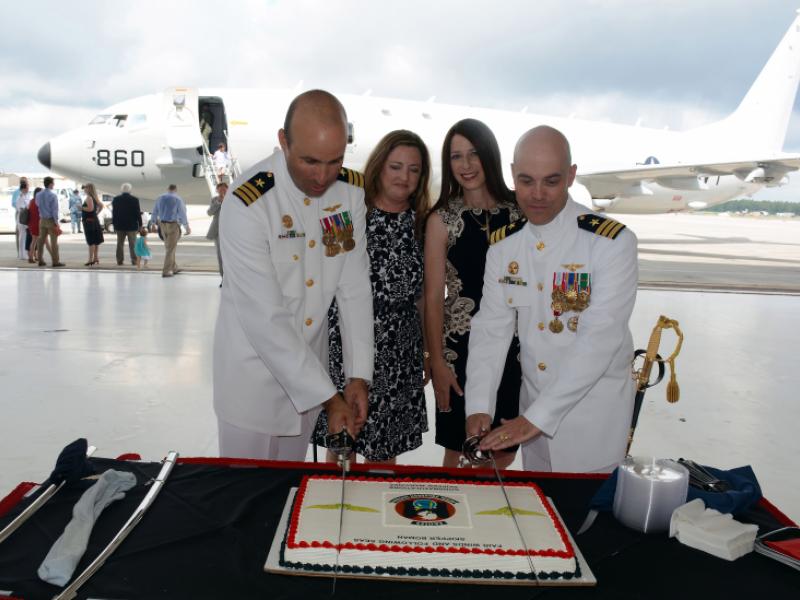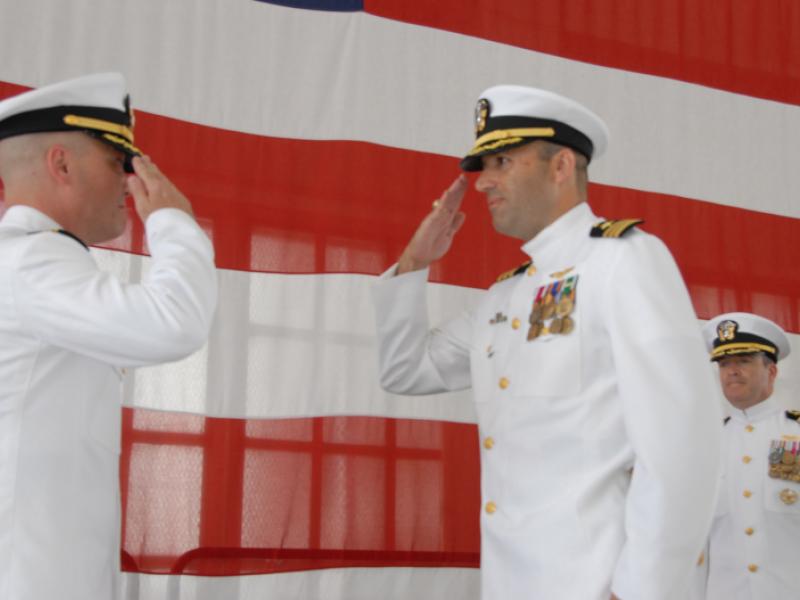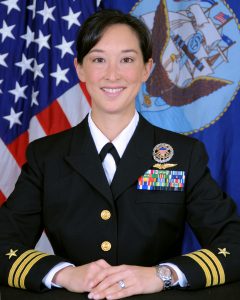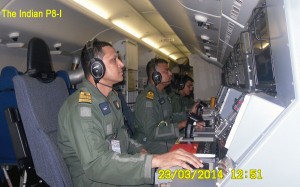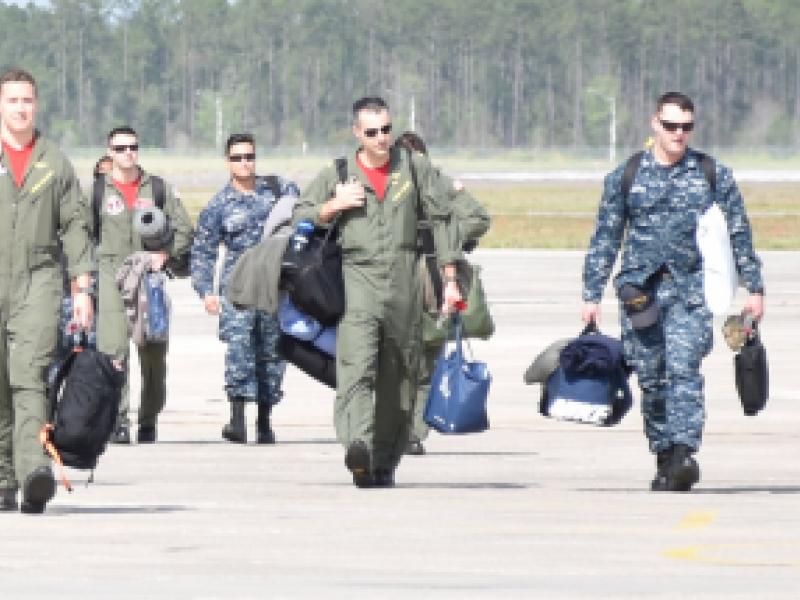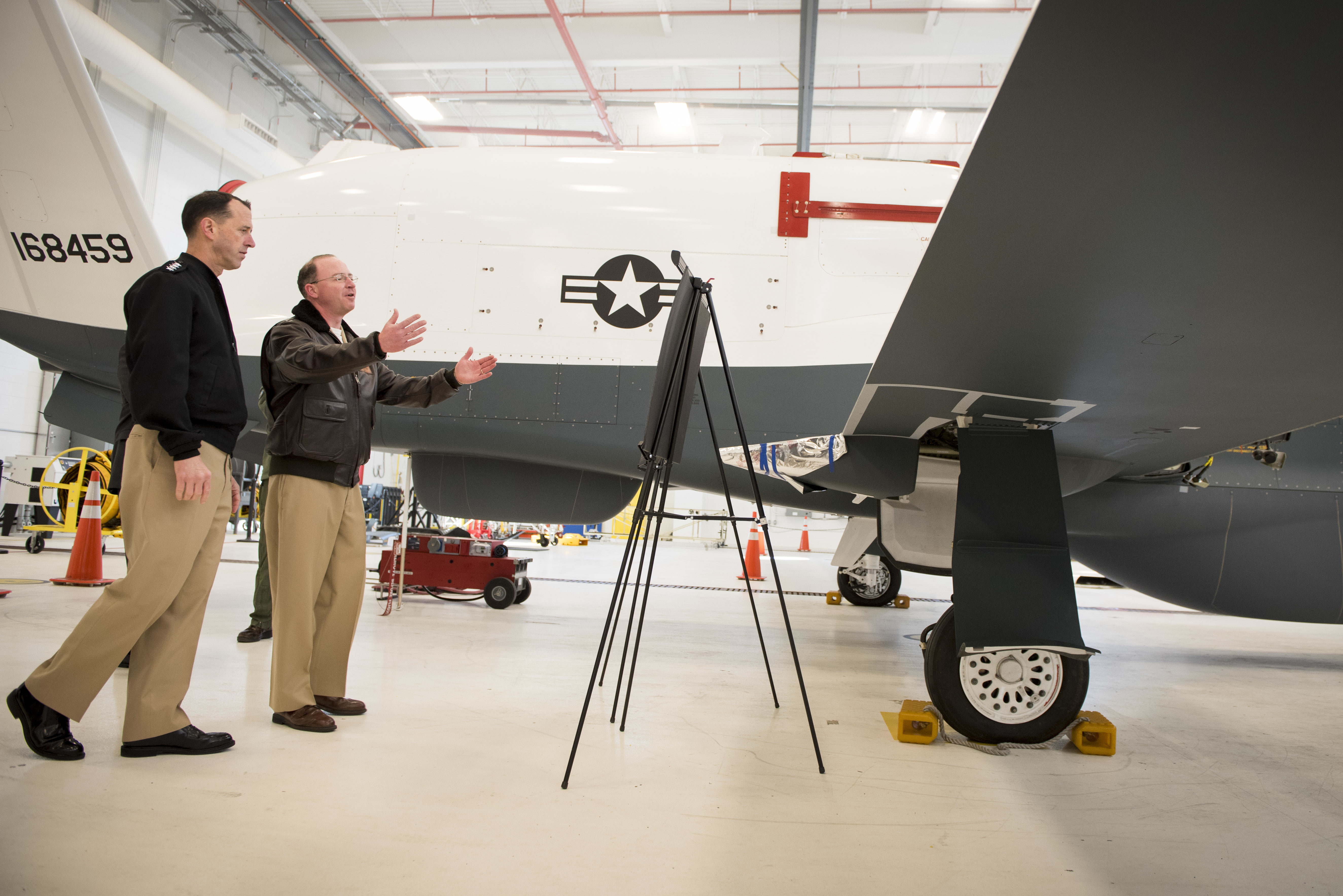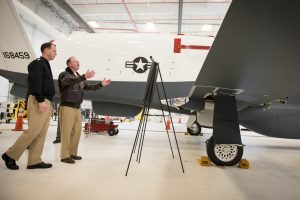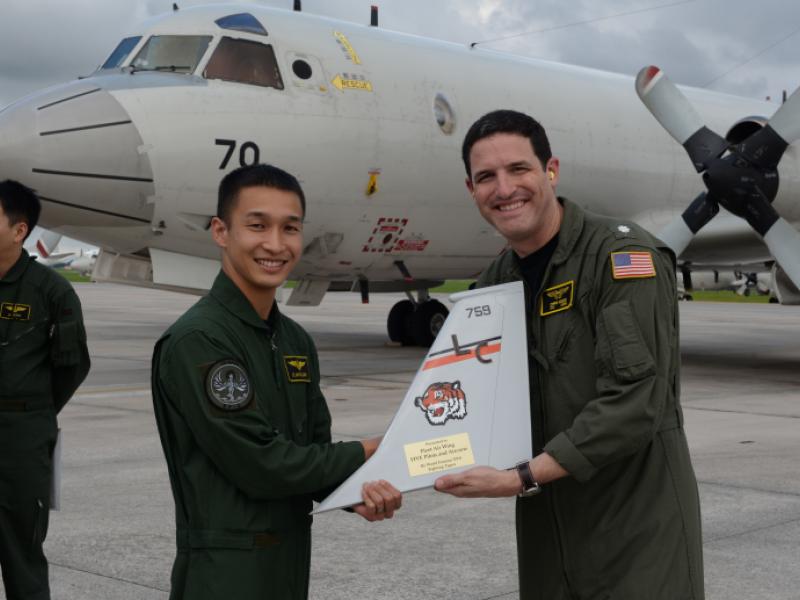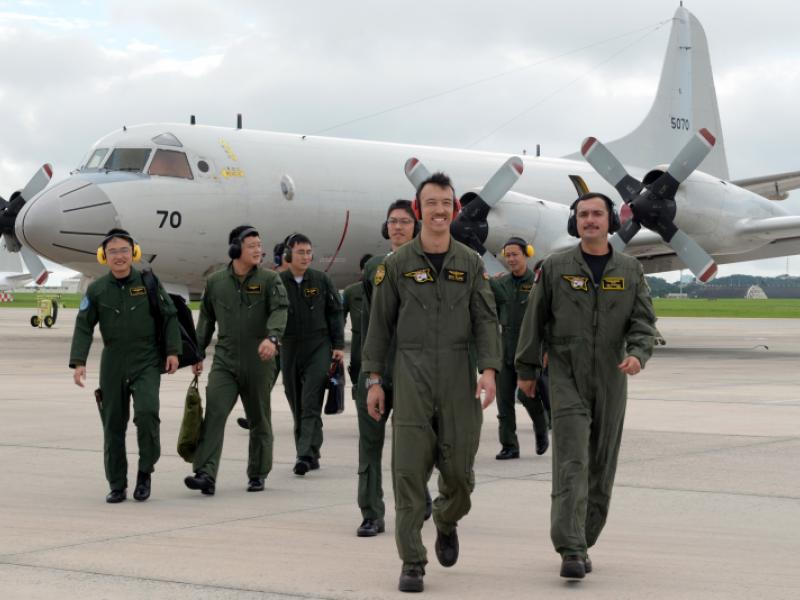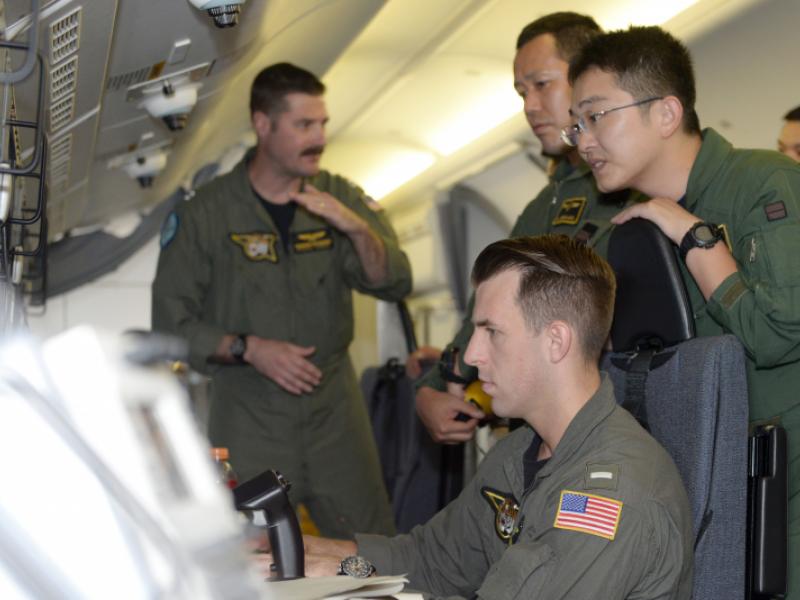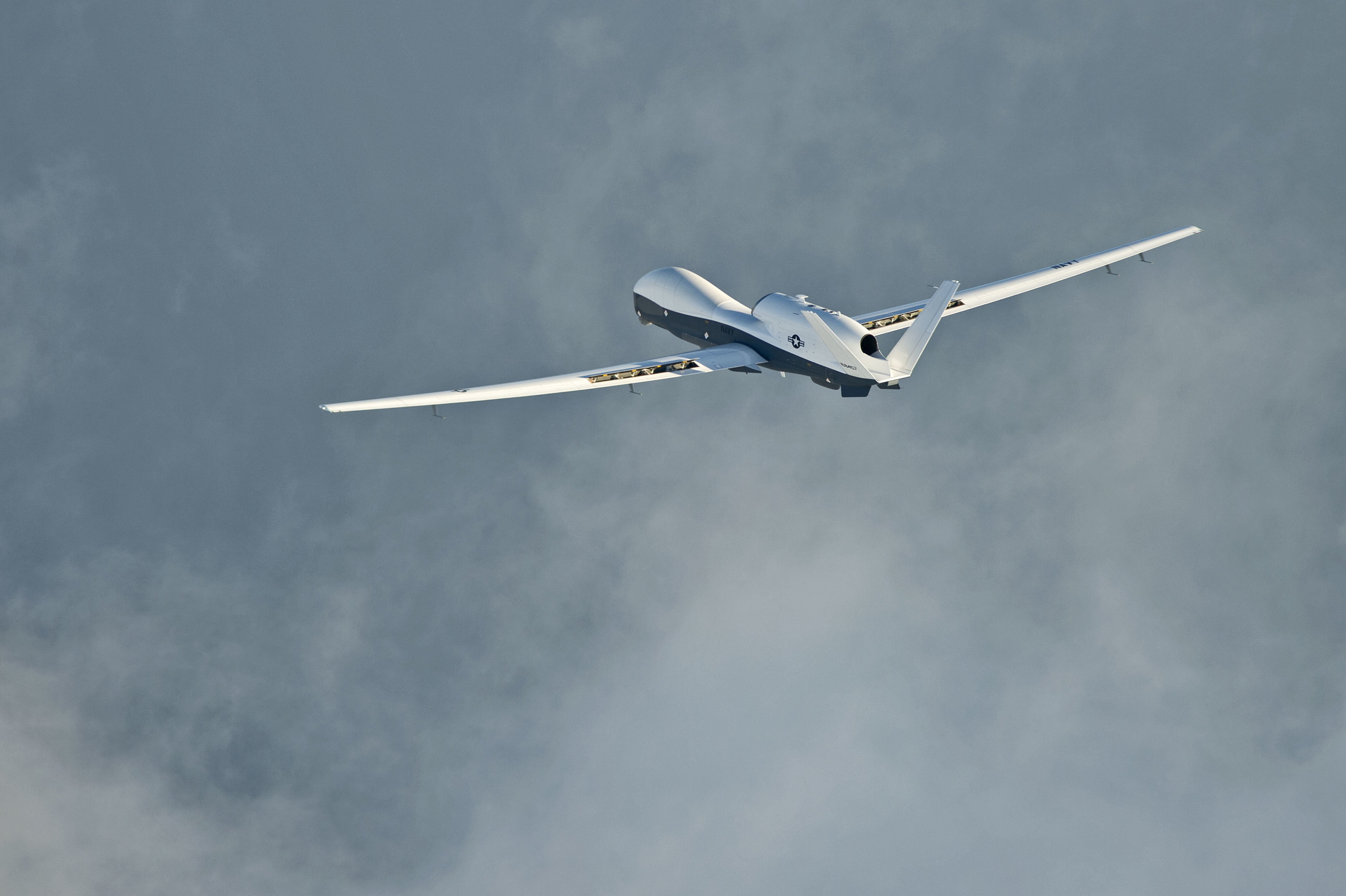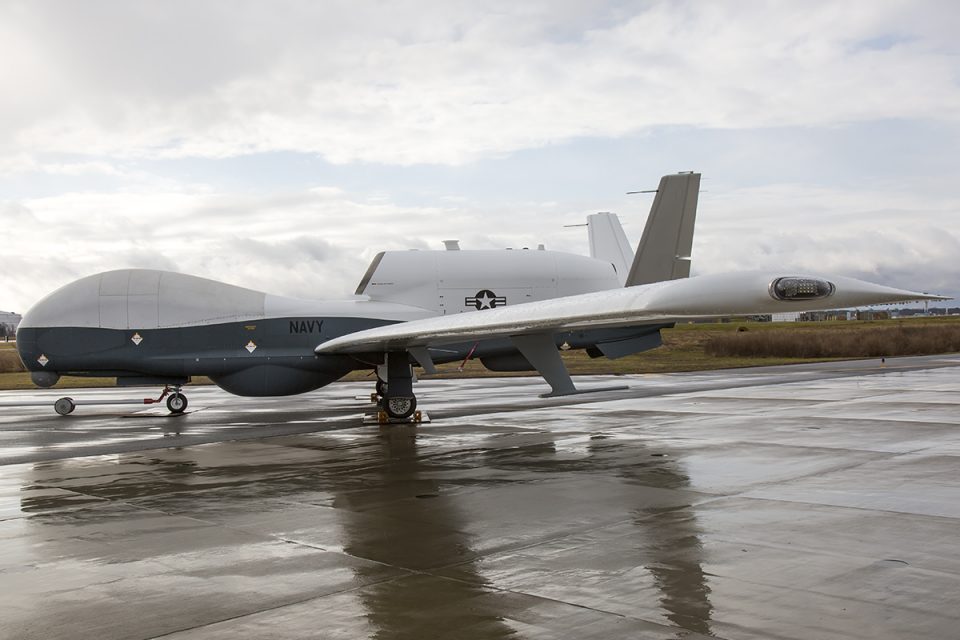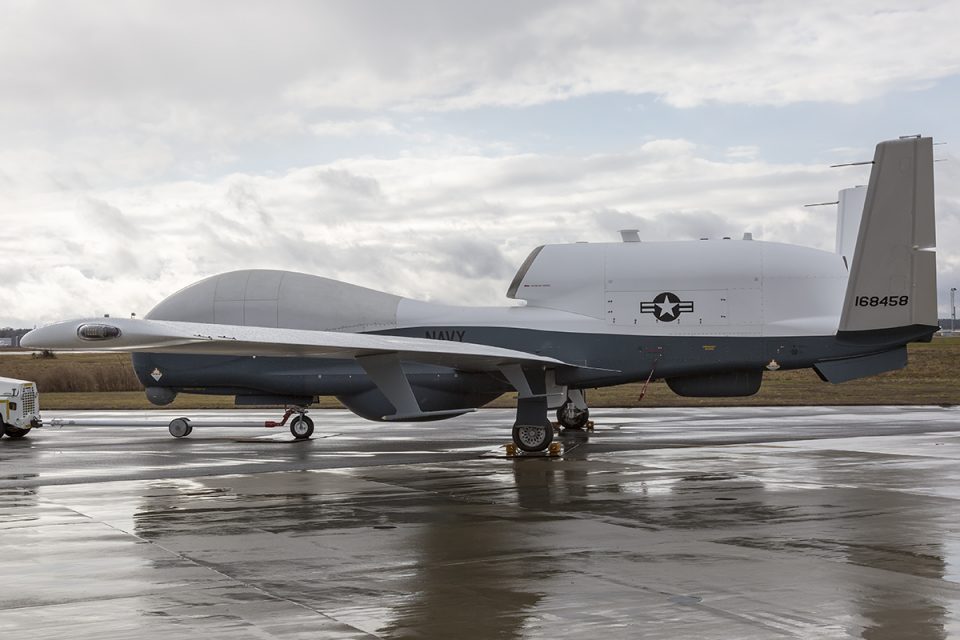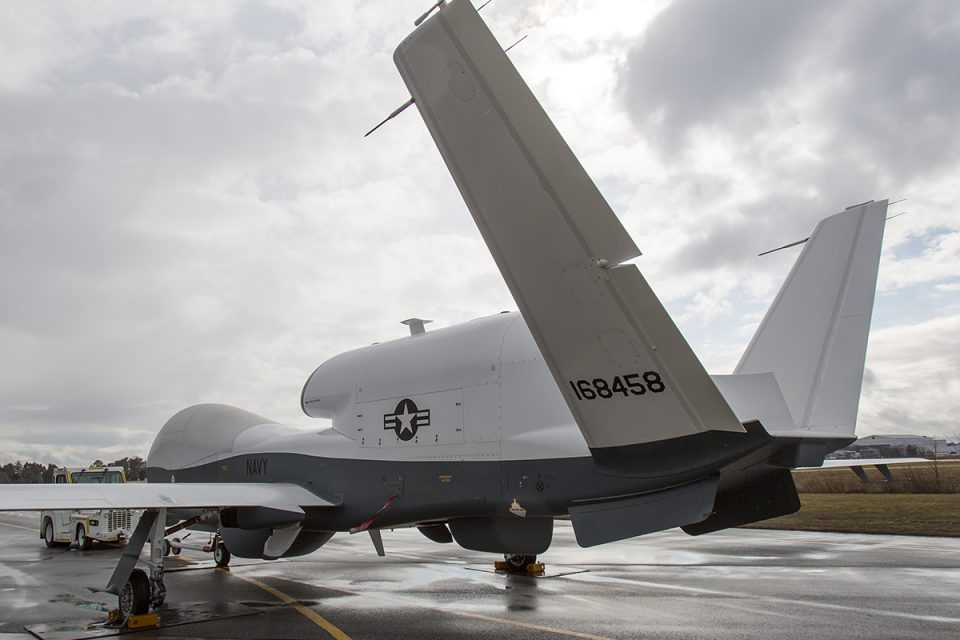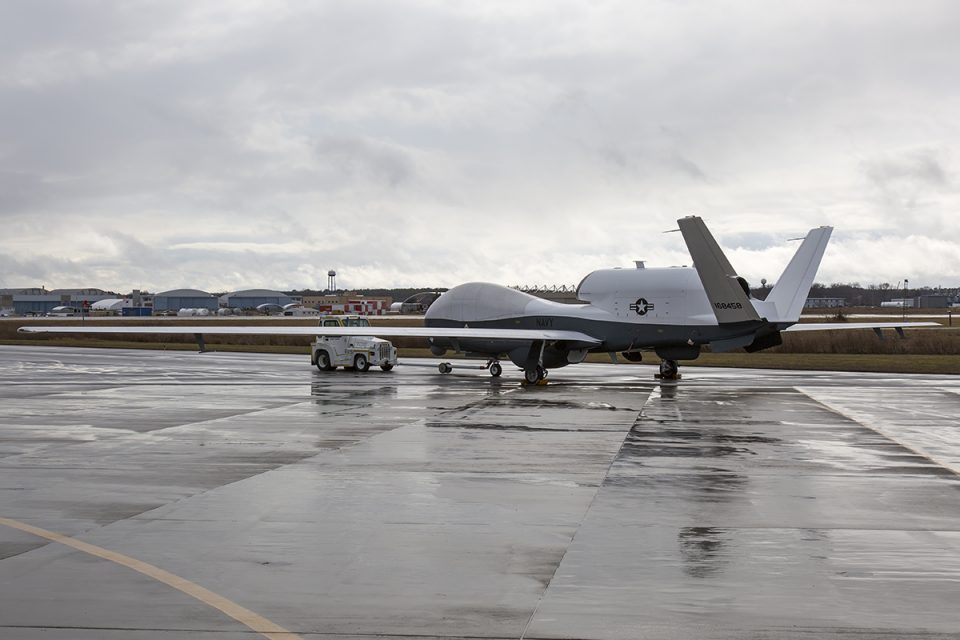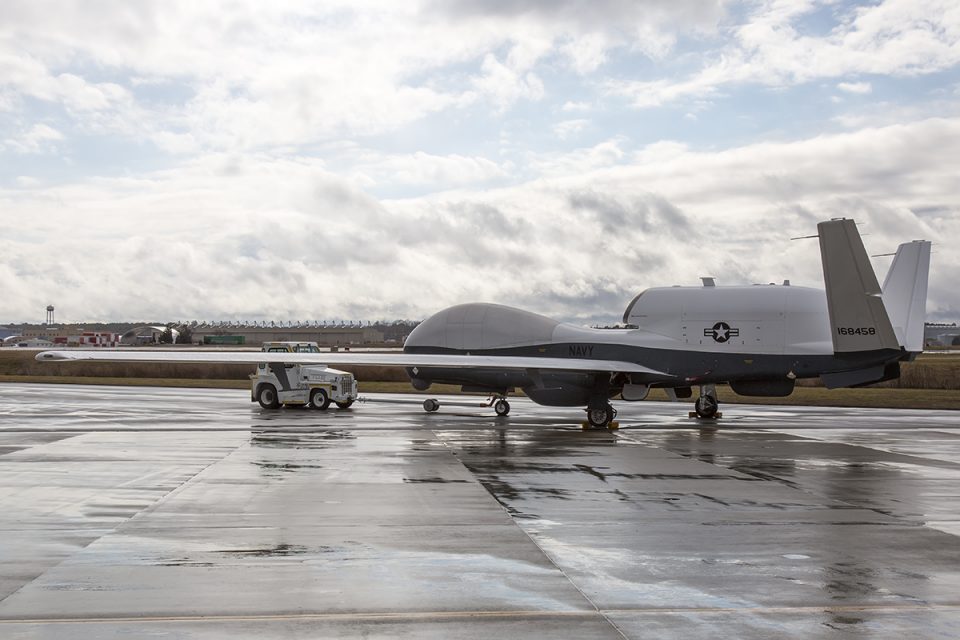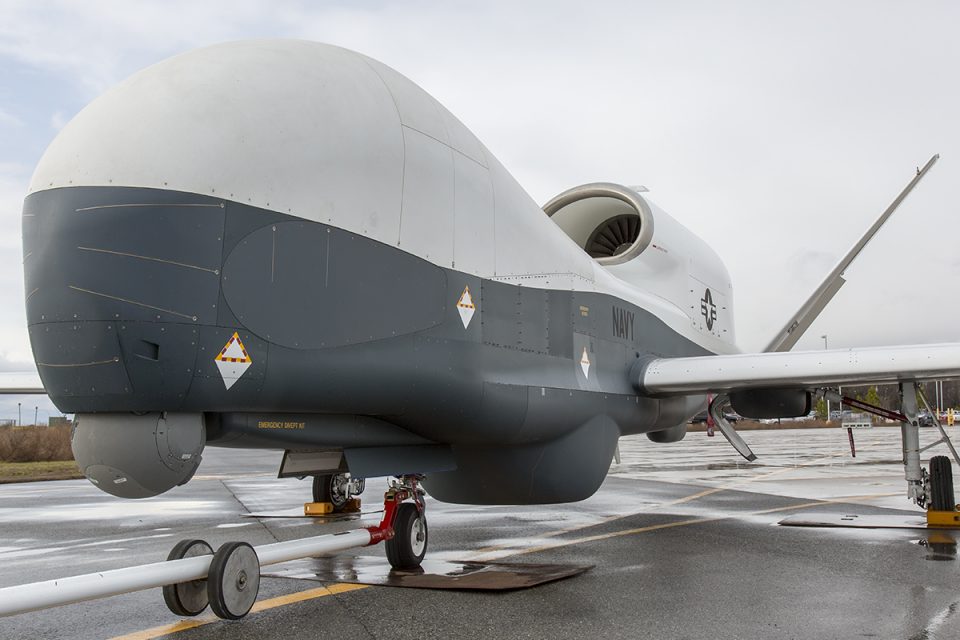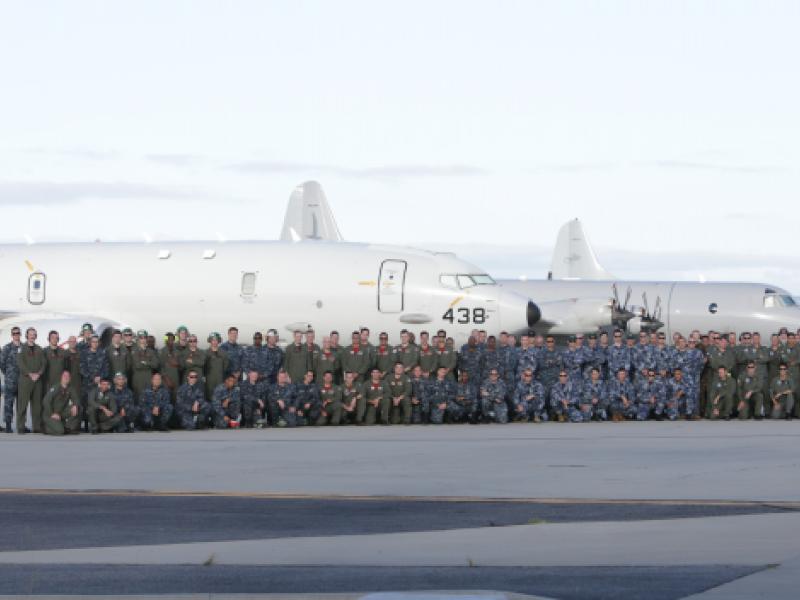2016-06-07 We visited Jax Navy at the end of May 2016, and will produce a Special Report summarizing the findings from the visit.
In this article, we would like to highlight some articles, which provide insights into various aspects of the standing up and operation of the P-8/Triton capability.
These articles first appeared in the Jax Air News and are linked throughout this article.
They give a flavor of the shaping of a global operational outreach for the aircraft from the outset of its operations.
Certification of Final P-8 Squadron at Jax Navy
In the following article, the focus is upon the last P-3C squadron operating at Jax Navy which has been certified as a P-8 squadron as of May 2016.
Here the VP-26 PAO, the VP-squadron “safe for flight” certification is discussed.
The “Tridents” of Patrol Squadron (VP) 26 received their P-8A Safe for Flight (SFF) certification from Commander, Patrol and Reconnaissance Group (CPRG) May 4, after a series of inspections that took place the week of April 25.
“This is huge,” declared Lt. Cmdr. Michelle Higingbotham, the maintenance material control officer of VP-26. “Our fleet readiness cycle has commenced and now that we have been qualified safe for flight we can prepare for deployment.”
Higingbotham stated that the SFF qualification marks the end of the transition of VP-26 from a P-3C Orion squadron to a P-8A Poseidon squadron. Although the Tridents accepted their first P-8A two months ago, they have been operating under the supervision of fleet replacement squadron VP-30. This safe for flight inspection marks the date when VP-26 is certified to operate independently.
The inspection certified the Tridents’ ability to operate safely as a P-8A squadron, and according to VP-26 Commanding Officer Cmdr. Mark Burns, the squadron scored higher on their SFF inspection than any of the squadrons that previously have made the transition to the P-8A.
The Tridents’ transition to the P-8A began in October of 2015 and marks the end of an era for active duty operational P-3C squadrons on the east coast. With the exception of two reserve squadrons and VP-30, the long reigning P-3C has officially been replaced by the P-8A at NAS Jacksonville. With the east coast transition complete, the last P-3C squadrons in Hawaii and Whidbey Island, Wash. are poised to begin their transitions later this year.
Earlier this year on March 16, Lt. Jared Stolle of VP-26 piloted the completion of the squadron’s first acceptance check of a P-8A Poseidon, bureau number 168848, from VP-30. The acceptance involved two consecutive days of inspections beginning with an on-deck test of the engines called maintenance turns, followed by an in-flight check called a functional check flight or FCF. The FCF is a comprehensive six-hour evaluation of airworthiness. Each flight system is tested to ensure proper function. The squadron’s first FCF was successful and the squadron was now ready to begin training for its first P-8A deployment slated for early 2017.
This summer, VP-26 will be participating in BALTOPS 2016, a multinational exercise hosted by Commander U.S. Naval Forces Europe. They will also be participating in exercises in Keflavik, Iceland and Lossiemouth, Scotland.
http://jaxairnews.jacksonville.com/military-jax-air-news/2016-05-18/story/vp-26-certified-‘safe-flight’#.V0diEFd5w7k
The UK Defence Minister visits Jax Navy
That same month (May 2016), the UK Minister of Defence visited Jax Navy to see the progress the RAF is making with regard to their P-8 preparations.
According to an article published on May 18, 2016 by Jax Air News, the visit was discussed.
The Right Honourable Michael Fallon, MP, the British Secretary of Defense, visited NAS Jacksonville May 9 where he met with Royal Air Force (RAF) “Project Seedcorn” personnel who have been embedded within the VP-30 maritime patrol training program since 2012. He also announced the RAF’s intent to sign its initial order for nine Boeing P-8A aircraft this summer. They expect to accept their first P-8A in mid-2019.
RAF Squadron Leader Mark Faulds said the purpose of the visit was for Fallon to experience the Boeing P-8A Poseidon first hand, inside and out, in order to gain a better understanding of the multi-mission aircraft’s capabilities. VP-16 provided the P-8A static display.
The secretary was also briefed at the P-8A Integrated Training Center by VP-30 Commanding Officer Capt. Dave Whitehead, and Commander, Patroland Reconnaissance Wing 11 Capt. Anthony Corapi.
Faulds explained that Project Seedcorn consists of 11 RAF personnel (two pilots, four TACCOs and five EWOs) who have trained on U.S. Navy P-8A aircraft embedded with Fleet Replacement Squadron VP-30 personnel since 2012.
The program enables British servicemen to maintain skills that would otherwise have been lost due to the cancellation of the outdated British Nimrod program in 2010.
Project Seedcorn also counts nine personnel embedded with squadron VX-1 at NAS Patuxent River, Md. By 2013, all Seedcorn personnel were certified P-8A instructors.
The defense secretary said, “This new fleet of nine maritime patrol aircraft will help to protect our nuclear submarines and surface ships. We can make this investment because we are increasing defense spending every year of this decade. That enables us to meet the NATO two percent commitment and keep Britain safe.”
http://jaxairnews.jacksonville.com/military-jax-air-news/2016-05-18/story/uk-defense-secretary-checks-out-poseidon#.V1Vwpld5w7k
During our visit, the key role of multinational and fleet exercises in rolling out of the P-8 and shaping its integration with the maritime, joint and coalition forces was highlighted.
There are a number of stories in the Jax Air News which highlight these exercises.
Truman Strike Group Exercise
In a piece written by the VP-5 PAO, an exercise with the Truman Strike Group was highlighted.
As September drew to a close; so did the Harry S. Truman Composite Training Unit Exercise (COMPTUEX). During the exercise, the “Mad Foxes” of VP-5 and “Fighting Tigers” of VP-8 provided real time support for anti-submarine warfare (ASW), anti-surface warfare (ASuW), and maritime Intelligence Surveillance and Reconnaissance (ISR) to the Carrier Strike Group (CSG) 8.
Patrol Squadron (VP) 5 Commanding Officer Cmdr. Alan D’Jock, stated, “I could not be more proud of the VP-5, VP-8, and Mobile Tactical Operations Center (MTOC-3) “Mad Tiger” team. We look forward to deploying with the Fighting Tigers and continuing our relationship throughout the remainder of our home cycle and next year’s deployment.”
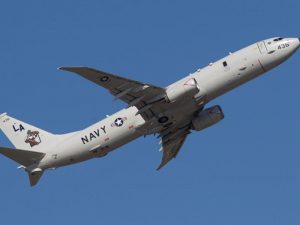
The VP-5 and VP-8 Mad Tiger team was well prepared for the uncertainties of such a dynamic environment. A contributing factor to the success of the exercise was due to the VP liaison officers (LNOs) aboard Harry S. Truman.
These individuals were led by Cmdr. Alan Miller, executive officer of VP-10 and provided enhanced communication between CSG8 and the maritime patrol reconnaissance aircraft. Each crew was able to adapt to and overcome potential problems that may arise such as formidable weather or simulated hostile contacts.
“The experience that VP-5 and VP-8 garnered from COMPTUEX is invaluable. What our aircrews saw on station is very difficult to duplicate in a simulated training environment,” remarked D’Jock.
VP-5 and VP-8 provided 532.8 flight hours from 73 events to the exercise. The squadron’s participation was a valuable asset to both the surface forces, as well as to the aircrews in the aircraft.
AWO3 Dymer, an electronics warfare officer with VP-5, said, “Being a part of the exercise was physically and mentally demanding but also taught some of the most senior crews lessons and tips for real world scenarios. It opened the eyes of many new sailors by showing the massive coordination required to accomplish many jobs.”
With this exercise complete, Oct. 2, VP-5 and VP-8 continued their training for a successful deployment next year. The Mad Foxes of VP-5 and Fighting Tigers of VP-8 will continue training, and participating in exercises abroad as well as at home.
http://jaxairnews.jacksonville.com/2015-10-14/vp-5-vp-8-complete-truman-strike-group-exercise#.V1VxdVd5w7l
Working with the Japanese
The “Fighting Tigers” worked the Japanese Maritime Self Defense Force earlier this year and introduced the P-8 to them.
According to the VP-8 PAO, in an article published on April 20, 2016:
The “Fighting Tigers” of Patrol Squadron (VP) 8 hosted 29 aircrew from the Japanese Maritime Self-Defense Force (JMSDF) Patrol Squadron (VP) 1 “Jupiter” at Kadena Air Base Okinawa, Japan on April 6.
The Fighting Tigers provided a static display of a P-8A Poseidon aircraft, briefed the JMSDF aircrew on the squadron’s history and primary missions – and discussed the typical operations and capabilities concerning the P-8A aircraft.
The visit concluded with a tour of Tactical Operations Center Kadena and lunch with the JMSDF visitors.
All personnel involved in the visit noted the benefit of interacting with their counterparts.
“I enjoyed discussing my job as tactical coordinator (TACCO) with a fellow TACCO from Japan,” said Lt. j.g. Erik Arstein, who organized the visit for VP-8.
“It’s fascinating how similar our responsibilities, as aircrew as well as naval officers provide such great common ground in our efforts as allies.”
Lt. j.g. Aaron Ingram assisted with the static display and found the JMSDF were very interested in the aircraft’s flight station, especially how to operate the state-of-the-art displays for interface with mission systems and autopilot control.
VP-8 has interacted with their VP-1 counterparts on several occasions in previous deployments both in-flight and on deck to advance bilateral training and partnerships. As this current deployment kicks off in Okinawa, the coordination and cooperation with the JMSDF will continue to flourish.
The Fighting Tigers are based out of Naval Air Station Jacksonville, and are currently on a six-month deployment in support of U.S. 7th Fleet.
http://jaxairnews.jacksonville.com/military-jax-air-news/2016-04-20/story/vp-8-introduces-p-8a-jmsdf#.V1Vx5Vd5w7l
Working with the Indonesians
Also, in the same month, the “Flying Tigers” went to Indonesia to participate in a multi-lateral naval exercise.
According to the VP-8 PAO, in an article published April 27, 2016:
The “Fighting Tigers” of Patrol Squadron (VP) 8 made their first ever visit to Padang, Indonesia on April 10 for the second annual Komodo exercise.
The “Fighting Tigers,” led by VP-8 Commanding Officer Cmdr. Andrew Barlow, were received by Colonel Muhammad Tohir of Wing Udara Two of the Indonesian Navy.
The Komodo exercise is a multilateral naval exercise with the Association of Southeast Asian Nations to foster relations, strengthen worldwide naval brotherhood, and conduct operations independently for world peace.
On April 10, flight crews from Indonesia, India, Pakistan, and the United States conducted a ”safety of flight brief” in preparation of the Komodo exercise.
On April 11, the opening ceremony officially kicked off. The Fighting Tigers demonstrated the P-8A in a fly-by for Indonesian President Joko Widodo, over the city of Padang.
After landing, VP-8 aircrew welcomed aboard the American Ambassador, Robert O. Blake Jr., and Rear Adm. Charles Williams, commander, Logistics Group Western Pacific, and CTF-73,
Both were given a tour of the P-8A and expressed great interest in maritime patrol operations.
The next day the Fighting Tigers, Pakistani, Indonesian, and Indian aircrews came together for a photo to commemorate the occasion. Afterwards, VP-8 aircrew provided a static display of the P-8A Poseidon.
“It was a remarkable opportunity to work alongside the members of the Indonesian Armed Forces,” said Lt. Andrew Kirchert, VP-8 Combat Air Crew 3 patrol plane commander. “Sharing this aircraft’s capabilities with our allies only strengthens our bonds.”
The final flight of Komodo exercise took place April 14 where the Fighting Tigers photographed the departing fleet of Southeast Asian Nations. Colonel Muhammad Tohir and his Indonesian aircrew joined VP-8 aircrew for a final meeting where they discussed the capabilities of the P8A in the mission areas of maritime domain awareness, search and rescue, and humanitarian aid.
VP-8 is currently deployed to the 7th Fleet area of responsibility conducting Intelligence, Surveillance, and Reconnaissance missions and providing Maritime Domain Awareness to supported units throughout the Pacific theater.
http://jaxairnews.jacksonville.com/military-jax-air-news/2016-04-27/story/vp-8-joins-multilateral-naval-exercise#.V1VyD1d5w7l
Working with Malaysians
In an article by the VP-8 PAO published on May 4, 2016, the recent exercise to work with the Royal Malaysian Air Force was described.
Combat Aircrew Four (CAC) 4 of Patrol Squadron (VP) 8 recently participated in a Subject Matter Expert Exchange (SMEE) with the Royal Malaysian Air Force. U. S. Pacific Commanding Officer (PACOM), Adm. Harry Harris Jr. and Chief of Malaysian Armed Forces Gen. Zulkifeli bin Mohd Zin, were among the many distinguished visitors hosted by the VP-8 “Fighting Tigers” during one of many Maritime Domain Awareness (MDA) missions conducted in theater.
The exchange played a vital role in demonstrating interoperability between both nations’ MDA forces and served as a continuation of a strong diplomatic relationship in Southeast Asia. The program consisted of two flights in the span of five days.
The first flight from Subang, Malaysia involved a combined crew of nine Fighting Tigers aircrew and eight locally based Malaysian aircrew, in order to display the operations and capabilities of the U.S. Navy’s new P-8A Poseidon aircraft.
The second flight consisted of distinguished guests from both countries, including Adm. Harris, Gen. Zulkifeli, 1st Air Region Chief Staff Royal Malaysian Air Force Brigadier General Abdul Manaf bin Md Zaid, and Assistance Chief of Staff Operation and Exercise Rear Adm. Ahmad bin Abdullah.
“What an incredible opportunity,” said Cmdr. Andrew Barlow, commanding officer of VP-8. “It’s not very often that you get to not only meet, but host VIPs from two nations to promote a relationship that could last lifetime. These flights are bigger than we all realize.”
This marks the beginning of a six-month deployment for the Fighting Tigers out of Kadena Air Base in Okinawa and the first after transitioning from the P-3C Orion to the Navy’s new P-8A Poseidon. The P-8A brings the latest technology to the maritime patrol and intelligence, surveillance and reconnaissance mission, making it the most advanced anti-submarine and anti-surface warfare aircraft in the world.”
“We are extremely grateful to the people of Malaysia for their hospitality and vital contributions to the alliance,” said Lt. Cmdr. Graham Gill, the detachment officer in charge. “The exchange program couldn’t have gone smoother thanks to the hard work of the Malaysian service men and women.”
http://jaxairnews.jacksonville.com/military-jax-air-news/2016-05-04/story/vp-8-builds-interoperability-royal-malaysian-air-force#.V1abpVd5w7k
Going to Red Flag
And earlier this year, the Pelicans participated in a Red Flag Exercise.
According to a story published by the VP-45 PAO, and published on March 30, 2016:
Members of Patrol Squadron (VP) 45 participated in Red Flag 16-1 at Nellis Air Force Base (AFB), Nev., Jan. 25through Feb.12, with the Navy’s newest maritime patrol aircraft, the P-8A Poseidon.
As part of the squadron’s Fleet Response Training Plan home cycle, Red Flag is an exercise held periodically at Nellis AFB since 1975. The exercise provides pilots, aircrews and support personnel from the U.S. and allied countries the opportunity to practice their skills in a simulated combat environment.
“These scenarios largely involved the P-8 performing advanced intelligence, surveillance and reconnaissance (ISR) missions and preparing the battlespace with timely and accurate information on threats to multiple platforms,” said Lt. Cmdr. Annie Gilson, a naval flight officer with VP-45.
“These platforms were able to use this information to neutralize targets more efficiently and effectively in a highly dynamic environment.”
Those in attendance of this year’s Red Flag exercise were members from the U.S. Air Force, U.S. Navy, Royal Australian Air Force and United Kingdom Royal Air Force.
“Working with the foreign militaries provided a better understanding of what they do,” said AWO2 Irma Sanchez, acoustic operator with VP-45. “Getting an opportunity to work with these militaries was a real eye opener into the bigger picture.”
“As a squadron, I feel that we did really well,” said Sanchez. “For our first Red Flag exercise as a P-8 squadron, I felt that we exceeded the standards that were set for us.”
Participants said one of the reasons VP-45 had such a successful exercise was because of their ability to work as a team.
“During Red Flag, our communication and capability to work together was very important,” said AWO2 Mathew Pereida, a VP-45 electronic warfare operator. “Working together as a team led to successful takeoff times, mission completeness, and overall coordinated operations effectiveness.”
Overall, members of VP-45 felt Red Flag has prepared them for the future.
“Red Flag does a great job of detecting and resolving squadron and aircraft deficiencies and how we can improve,” said AWO2 Jason Foor, “It really showed us what level we are operating at and where we can be in the future.”
http://jaxairnews.jacksonville.com/military-jax-air-news/2016-03-30/story/‘pelicans’-participate-red-flag-exercise#.V1V0QVd5w7l
Working with the Canadians
And in the Fall of 2015, the P-8 went to Canada for training with the Royal Canadian Navy.
According to a story written by the VP-5 PAO and published on October 28, 2015:
The “Mad Foxes” of Patrol Squadron (VP) 5 spent the past week on the road, completing allied maritime training with Canadian military forces.
The Mad Foxes participated in Frontier Sentinel 2015, a bilateral exercise with the Royal Canadian Navy, the Royal Canadian Air Force, the United States Coast Guard, and the Canada Border Services Agency.
During the exercise, VP-5 was tasked with identifying all targets within the operational area. The crew was able to employ the advanced sensors aboard their P-8A Poseidon to track and monitor these targets throughout the exercise.
The communications suite on the P-8A allowed the aircrew to provide the Canadian Operational Commander with near real-time information, vital intelligence needed to make tactical decisions. The coordination between the allied forces was an overwhelming success.
The Mad Foxes and their Canadian counterparts also had the opportunity to tour each country’s respective aircraft: the P-8A Poseidon and CP-140 Aurora. The CP-140 is a Canadian coastal patrol aircraft based on the P-3 Orion airframe.
AWO2 Tyler Johnson stated, “It was really interesting to see how other countries have taken their P-3s and retrofitted them to their needs, bringing enhanced capabilities to the table.”
The mission commander and detachment officer in charge, Lt. Cmdr. Adam Pace, stated, “As allies, we need to continue conducting bilateral exercises that involve any and every mission set. Whether it’s national defense or humanitarian assistance and disaster relief, when our nations call each other for help – we will be able to answer that call effectively and efficiently. With events like Frontier Sentinel, we are able to continue those personal and professional relationships that lead to success while conducting our respective nations’ tasking.”
VP-5 is currently halfway through its inter-deployment readiness cycle at NAS Jacksonville and Cecil Airport, and will soon start the Operational Readiness Evaluation (ORE) portion of their home cycle. The Mad Foxes will continue training to ready themselves for the ultimate goal of a successful deployment early next year.
http://jaxairnews.jacksonville.com/2015-10-28/‘mad-foxes’-complete-training-our-neighbors-north#.V1V0wld5w7l
Standing up Triton Facilities
The Triton has had less news but is getting ready for its first deployment.
But in this story published on May 7, 2014, the laydown of the Triton facilities was discussed.
The Navy’s first squadron designated to fly the MQ-4C Triton unmanned aerial vehicle (UAV) is taking shape at NAS Jacksonville.
Unmanned Patrol Squadron (VUP) 19 Officer in Charge Cmdr. Shannon Clark recently explained developments in the program since the squadron stood up Oct. 1, 2013.
“We’re currently working to expand VUP-19 from an administrative entity to a more functional perspective,” said Clark.
“We will start some training on the actual air vehicle this summer to assist with some upcoming testing. However, our primary focus right now is ensuring that the administrative and operational sides of the squadron are properly functioning for the arrival of VUP-19’s first commanding officer (CO). This way, the CO can concentrate on assuming the duties of this command and focusing on the squadron’s mission.”
According to Clark, 21 officers and enlisted personnel will be assigned to VUP-19 at NAS Jacksonville by the end of this fiscal year. Approximately half of the Sailors will be aircrew/operators and the other half will be administrative support.
By the end of 2015, VUP-19, nicknamed “Big Red,” will have approximately 100 Sailors at the squadron’s detachment site located at Naval Base Ventura County/Point Mugu, Calif.
Currently, operators assigned to VUP-19 will receive training at NAS Patuxent River, Md. Flight training will eventually shift to VP-30 at NAS Jacksonville as soon as the Triton curriculum is validated and training equipment is installed.
“The initial teaching will be this summer at NAS Pax River under Northrop Grumman instruction. Training received is in preparation for our involvement in the Operational Assessment and Operational Evaluation testing periods for this platform,” explained Clark.
Other facilities aboard NAS Jacksonville that will support the UAV’s mission include the MQ-4C Triton Mission Control Center that is currently under construction, with a projected completion date of December 2014.
“This two-story structure, with an array of rooftop antennas, will house the squadron’s mission control stations” said Clark.
“In this facility, UAV Operators will execute all phases of the mission, mission planning, mission control and data analysis.”
“From here, the Triton will be operated around the globe by crews consisting of air vehicle operators, naval flight officers and aviation warfare operators.”
The Triton is designed to provide long-range, long-endurance maritime patrol coverage for Naval Air Forces Atlantic; 5th, 6th and 7th fleets; Fleet Forces Command operations in Atlantic; Task Force 80; and support the U.S. Northern and Southern commands as required.
According to the Navy’s Persistent Maritime Unmanned Aircraft Systems Program Office (PMA-262), as an adjunct to the P-8A, the MQ-4C Triton will provide combat information to operational and tactical users such as expeditionary strike groups, carrier strike groups and joint forces maritime component commanders.
http://jaxairnews.jacksonville.com/2014-05-07/triton-uav-squadron-growing-facilities-personnel#.V1V1HFd5w7l
Upgrading P-8 Hangars
And finally, this story focuses on the upgrading of the hangar bays for the P-8.
This story is by Clark Pierce, editor of the Jax Air News and was published on January 20, 2016.
VP-30, the Navy’s fleet replacement squadron for the P-8A Poseidon maritime patrol aircraft, is upgrading its hangar at NAS Jacksonville to accommodate the new Navy patrol aircraft based on the Boeing 737-800 airliner.
“This project will convert the VP-30 hangar (originally built in 1996) so it will be able to accommodate P-8A aircraft. The new height of the hangar opening facing the flight line will increase by about five feet,” said Project Management and Engineering Branch Head Thom Tryon P.E. of the NAS Jax Public Works Department, during an on-site interview Jan. 13.
“The work includes raising the hangar door entrance height to accommodate the taller P-8A vertical stabilizer height, install new hangar doors, replace parts of the existing hangar bay concrete deck, reconfigure the AFFF (Aqueous Film Forming Foam) fire suppression system for both discharge and capture of AFFF through a new grating system.”
He added that the project will adjust the existing infrared heating and compressed air systems for the new P-8A parking layout inside the hangar.
Existing energy efficient LED lights and infrared heaters will be reused and relocated as necessary. The hangar maintenance crane will also be relocated.
“No changes will be made to the administrative spaces of VP-30 and those spaces will remain occupied during construction,” said Tryon.
VP-30 Hangar Project Information
Award Date: 20 March 2015
Award Value: $5,267,768
Funding Type: Military Construction (MILCON)
Anticipated Completion Date: September 2016
Contractor: HCR Construction Inc. of Norcross, Ga.
Designer: URS Corporation
http://jaxairnews.jacksonville.com/military-jax-air-news/2016-01-20/story/vp-30-upgrades-hangar-bay-p-8a-poseidon#.V1Xk_ld5w7k
